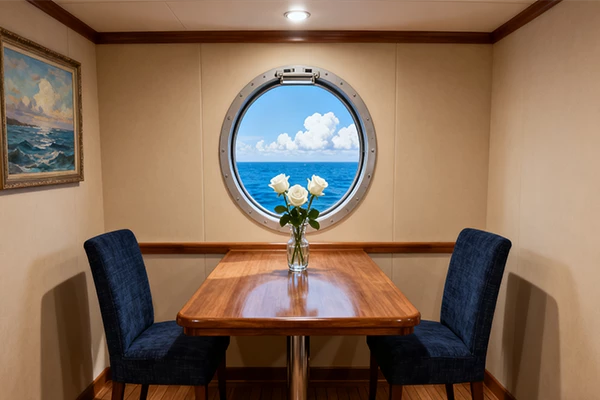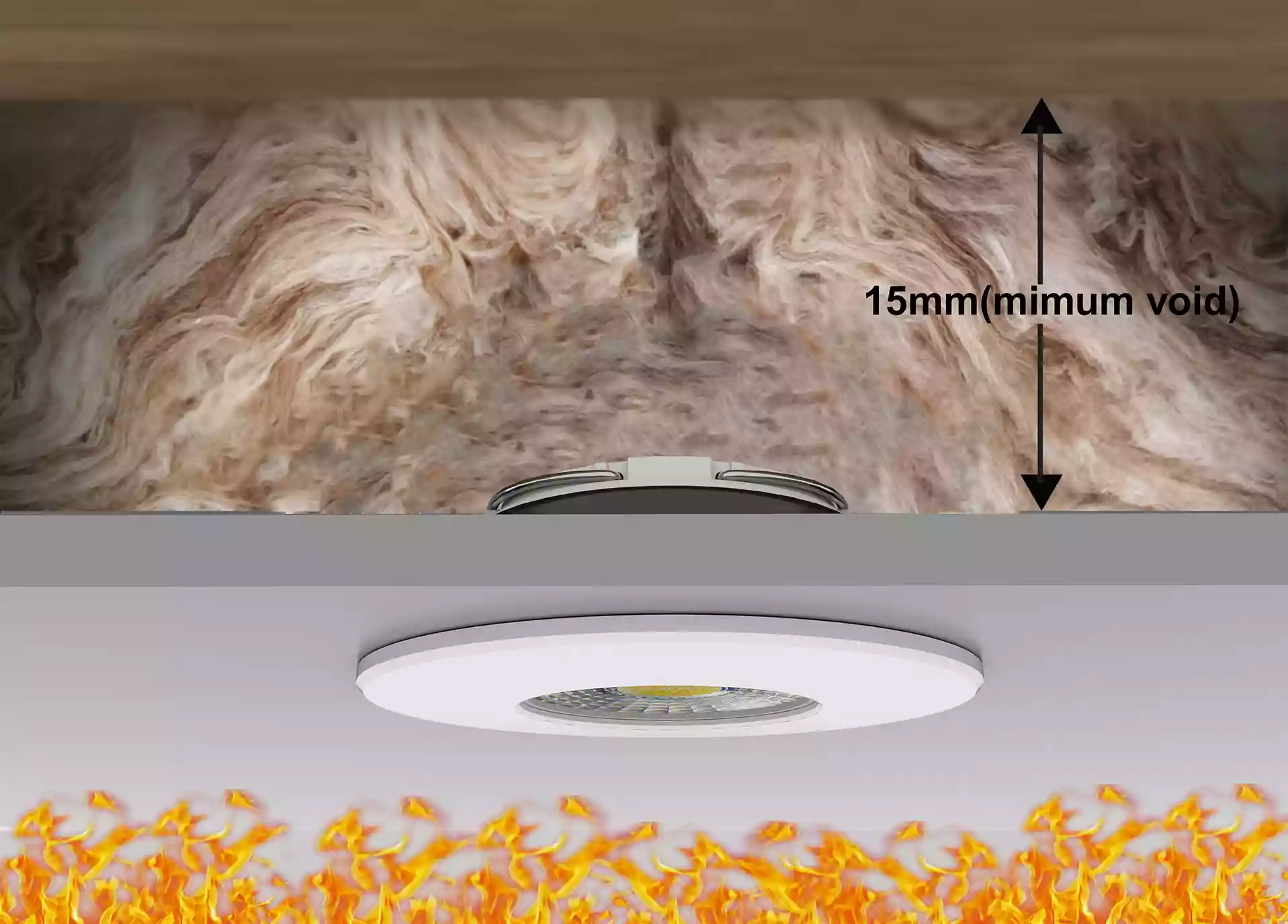Why LED Downlights Are Good for Marine Lighting ?
 A-ONE
A-ONE
 Nov 17,2025
Nov 17,2025

Traditional incandescent lights are inefficient, short lifespan, and hot. In harsh marine conditions of vibration, humidity, salt mist, and voltage fluctuations, they fail easily, raise energy and maintenance costs, and risk safety and efficiency. They fall short of modern needs.
As global shipping expands, marine interiors require more than basic lighting. Systems must resist extremes while ensuring crew and passenger comfort.
A reliable solution is very important. This article explores the challenges and shows why professional LED downlights are the ideal replacement for legacy sources, meeting all demands of modern interior marine lighting.
Core Challenges of Interior Marine Lighting
Interior marine lighting faces far greater complexity than onshore interiors, contending with physical, electrical, optical, and human factors. Key issues include:
1. Severe Environmental Corrosion
Salt mist (up to 3.5% NaCl) and high humidity (>85% RH) trigger electrochemical corrosion. Metal housings and PCBs in Legacy sources rust, causing shorts or failure.
2. Persistent Vibration and Shock
Engine operation (20–100 Hz) and wave impact (up to 5g) break filaments or loosen bulbs. Annual failure rates reach 20%; mid-voyage replacement is hazardous.
3. Complex Electrical Demands
Limited grid capacity causes voltage swings of ±15–20% (DC 24V / AC 220V), plus spikes and EMI. Lighting control circuits must remain stable under these stresses.
4. Poor Heat Dissipation and Maintenance Difficulty
Incandescent lights convert 90% of energy to heat, creating hot spots (>80°C) in confined spaces and accelerating degradation. Narrow marine layouts make high-level replacements costly (thousands of USD per event) and often require downtime.
5. Navigation Safety Regulations
COLREG and SOLAS mandate constant output in bridges, corridors, etc. Legacy sources start slowly and run hot, failing to comply.
6. Human Comfort and Health
Visible flicker (>1,000 Hz) or high blue-light peaks (~450 nm) in cramped quarters heighten collision risk and fatigue.
Key Advantages of LED Downlights for Interior Marine Lighting
Designed for vibration, salt-laden air, and voltage instability, LED downlights deliver clear superiority over legacy systems. The following highlights mainstream product strengths.
Outstanding Environmental Resilience
- Corrosion-resistant construction: High-grade aluminium with specialised coatings withstands salt mist and humidity, extending service life.
- Superior shock and vibration tolerance: Recessed mounting and reinforced fixings prevent loosening or damage during continuous operation.
- High ingress protection: IP44–IP65 (dry vs. wet zones); IP65+ offers full dust and spray-water resistance—suitable for engine rooms, galleys, and bathrooms.
Superior Performance and Cost Efficiency
- Ultra-long lifespan: >50,000 hours vs. ~1,000 hours for incandescent—slashes replacement frequency and costs.
- High luminous efficacy: 100–130 lm/W; >70% energy savings vs. legacy sources, easing generator load.
- Wide input voltage range: Handles grid fluctuations, ensuring instant start and flicker-free operation.
Advanced Optics and Human-Centred Design
- Precise light distribution: Lenses or reflectors deliver uniform illumination, minimise glare, and avoid interference with navigation.
- Flicker-free & low blue light: Constant-current drivers eliminate flicker; optimised chips and colour temperatures keep blue-light hazard at RG0—protecting crew vision.


Product Example
IP65 Ultra-thin High-Efficient Fire-Rated LED Downlight DL95/1. To further illustrate the key features of a high-standard LED downlight suitable for marine use.
Basic Specifications
- Power: 4W / 6W / 8W
- 4 CCT settings: 2700K / 3000K / 4000K / 5700K
- Fire rating: 90-minute resistance
- IP65 protection
Marine-Specific Validation
- Salt Spray Test: To verify its corrosion resistance performance in high-temperature and high-salt environments.
- Vibration Test: To ensure structural stability and mechanical durability.
- Programmable Climate Simulation Test: To examine operational reliability and service life under extreme temperature and humidity conditions.
- Surge/Lightning Impulse Test: To evaluate its ability to withstand high-energy transient pulses.
- Electromagnetic Compatibility (EMC) Test: To guarantee interference-free operation within complex electrical environments.
- Dielectric Strength Test: To confirm that its insulation performance meets safety standards.
Structural & Installation Benefits
- Ultra-slim body (30 mm) fits tight ceilings (minimum 15 mm void).
- Secure mounting: Driver screw-fixed in ceiling; lightweight fixture fits flush and stays tight in rough seas.
- Clean aesthetics enhance perceived space and safety.


Practical Implementation of LED Downlights in Interior Marine Lighting
Interior Marine zones vary in function, regulation, and ergonomics; lighting must be tailored accordingly.
Functional Requirements by Area
- Bridge: Supports routine tasks and night navigation; avoids instrument glare.
- Crew/Passenger Cabins: Promotes rest and privacy; enables reading.
- Mess/Dining: Bright, welcoming for social meals.
- Corridors/Stairways: Eliminates shadows for safe passage.
- Galley/Bathrooms: Bright, colour-accurate for hygiene and safety.
Selection Guide (Approximate Values)
|
Area |
Illuminance (lux) |
CCT (K) |
CRI (Ra) |
IP Rating |
|
Bridge |
300–500 (day) ≤50 (red night) |
4000 (white) Red mode |
≥80 |
IP44 |
|
Cabins |
100–300 (general) 500 (task) |
2700–3000 |
≥90 |
IP44 |
|
Mess/Dining |
200–400 |
3000–4000 |
≥90 |
IP54 |
|
Corridors/Stairs |
100 (floor) |
4000 |
≥80 |
IP54 |
|
Galley/Bathroom |
500 (work surfaces) |
3000–4000 |
≥85 |
≥IP65 |
Long-Term Value of Investing in LED Downlights
Ultra-low power and 50,000+ hour life recover upfront cost in 1–3 years via electricity and maintenance savings; lifetime cost is minimal.
Low-voltage, cool operation cuts fire risk; stable light improves operational safety; no UV/IR protects cargo and finishes.
Virtually “fit-and-forget” across overhaul cycles—reduces labour, spares inventory, and downtime losses.
What can we learn
From surviving extreme marine conditions to enhancing crew comfort, professional LED downlights meet every core requirement of modern interior marine lighting. This is not mere light replacement—it is a future-proof upgrade for safety, efficiency, and well-being. Selecting certified marine-grade LED downlights is a inevitable strategic choice for sustainable shipping.
FAQs
Q1: LED downlights cost more upfront—is the investment worthwhile?
A: Evaluate total cost of ownership (TCO)—energy, replacements, and labour. High efficiency and longevity deliver multiple returns; payback is typically 1–3 years.
Q2: How can I verify a downlight is truly flicker-free?
A: Quick check: point a smartphone camera at the lit fixture; no rolling bars = flicker-free. For certainty, request certified test reports showing low flicker percentage and index.
Q3: What precautions apply when installing in galleys or bathrooms?
A: Choose ≥IP65 rating to block water ingress. Proper sealing during installation is essential.

 Home
Home LED Ceiling Lights – One of the Best Solutions for Low Ceilings
LED Ceiling Lights – One of the Best Solutions for Low Ceilings 


 2F, Building 2, Zhongda Industrial Park, Dongshan Industrial Street, Zhangmutou Town, Dongguan, Guangdong 523619, China
2F, Building 2, Zhongda Industrial Park, Dongshan Industrial Street, Zhangmutou Town, Dongguan, Guangdong 523619, China










